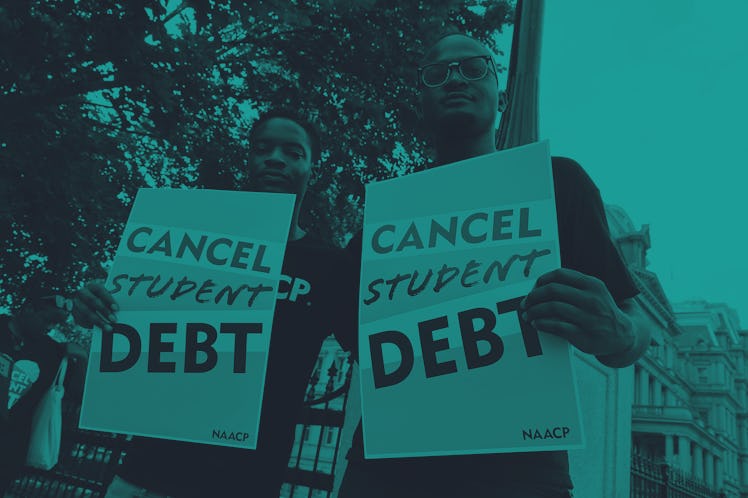Why There's Still Hope For These 10 Million Student Loan Borrowers
People who hold Federal Family Education Loans (FFEL) have been left out of loan forgiveness. But the Biden administration is trying to change that.

Millions of borrowers who were left out of Biden’s federal student loan forgiveness plan that cancels $10,000 to $20,000 per borrower making under a certain income threshold may still be able to reap the benefits. Around five million Americans hold what’s known as a Federal Family Education Loan (FFEL), one of the earliest types of federal loans available to college hopefuls — and so far, they’ve been left out of Biden’s actions on student loan forgiveness. Why? And what can Biden do to help them? Here’s what to know.
From the 1960s until 2010 when they were phased out, FFEL loans were a common lending vehicle for those looking to further their education. The loans were held by private companies but backed by the government. So after Biden’s announcement that $10,000 in debt would be canceled for those with federal loans and up to $20,000 for Pell Grant recipients, the millions of FFEL borrowers were left out in the cold, still holding their debt — because those loans are commercially held, even though they’re backed by the government. Frustrating, yes.
But there’s a glimmer of hope on the horizon for these borrowers. The Department of Education announced that it is looking into workarounds for FFEL holders.
“The Biden administration is cutting through red tape and asserting that millions of previously overlooked borrowers will be included in its bold student debt relief plan,” Ben Kaufman, director of research and investigations at the Student Borrower Protection Center, told CNBC.
Of the 10 million FFEL loans still in repayment, about half are currently owned by the government, either due to default in payment or from a 2008 initiative by the government to buy back those loans during a period of economic downturn. If your FFEL loan was eligible for the pandemic payment pause, it is already eligible for loan forgiveness.
But the remaining five million or so FFEL borrowers can still benefit from loan forgiveness. They just need to take a few extra steps and wade through a bit more red tape.
According to the New York Times, FFEL borrowers with commercially held loans can consolidate their debt into a federally backed Direct Loan Program, making them eligible for loan forgiveness. To consolidate your FFEL into a Direct Loan, contact your loan servicer or visit StudentAid.gov and follow the steps provided.
There is currently no published deadline for consolidation, but analysts expect that it’s better to change to consolidating your loans sooner, rather than later.